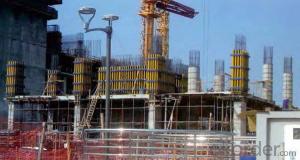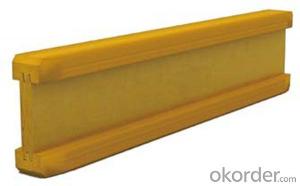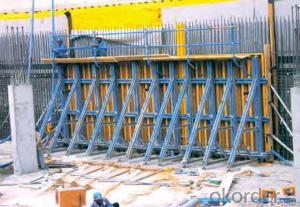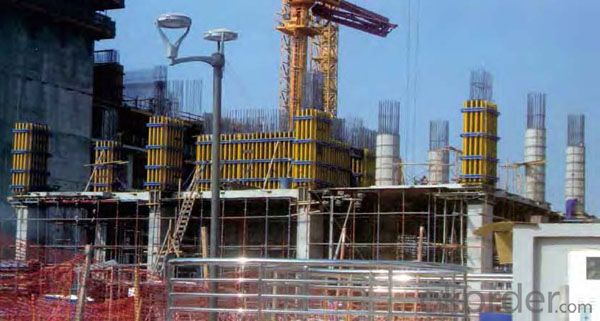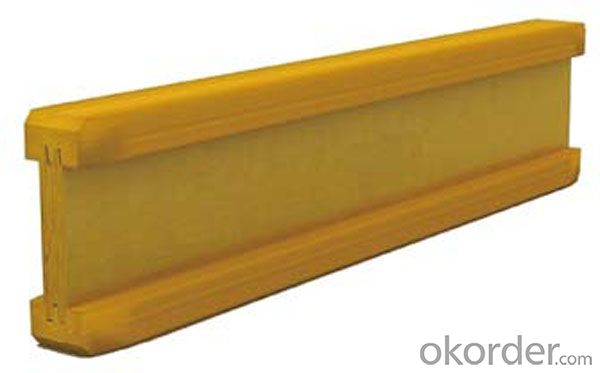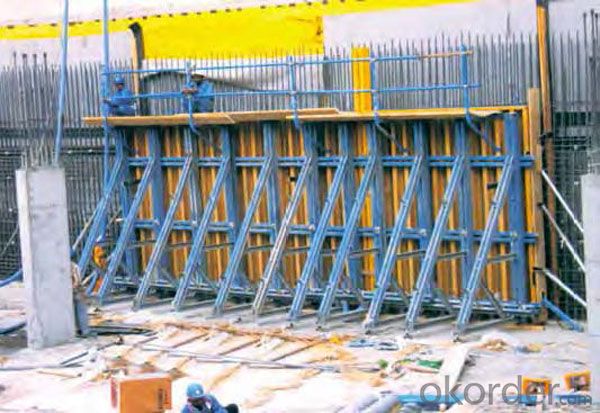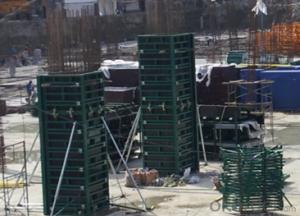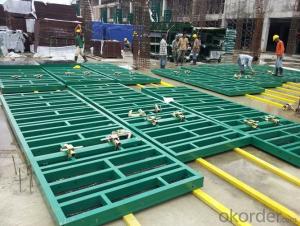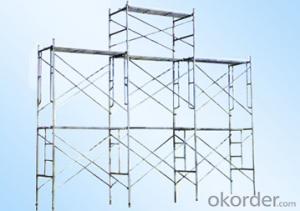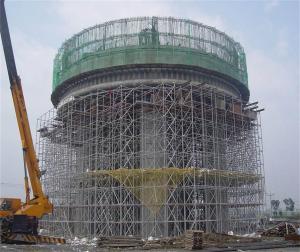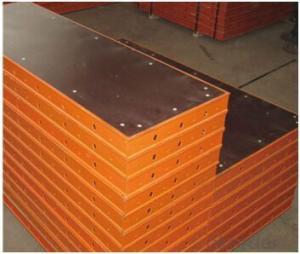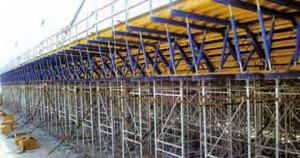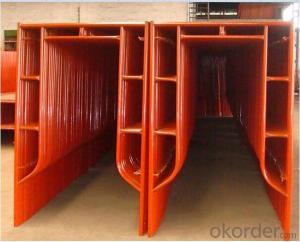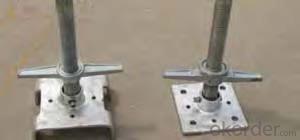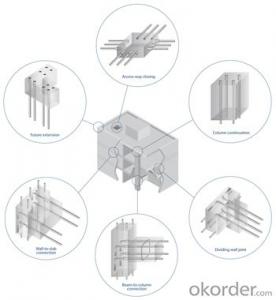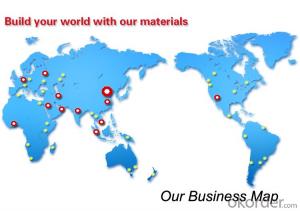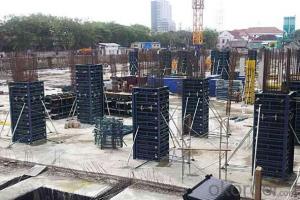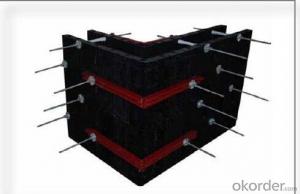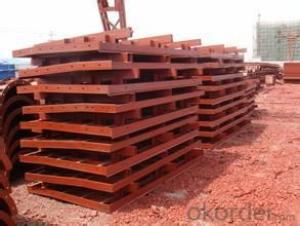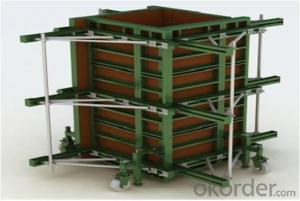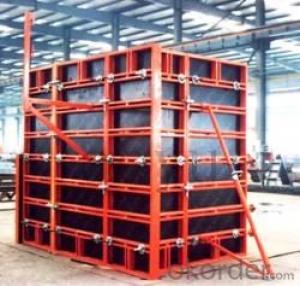Screw Jack For Scaffolding Formwork Scaffolding Tubes and Fittings Low Price
- Loading Port:
- Tianjin
- Payment Terms:
- TT OR LC
- Min Order Qty:
- 6000 set
- Supply Capability:
- 50000 set/month
OKorder Service Pledge
OKorder Financial Service
You Might Also Like
Screw Jack For Scaffolding Formwork Scaffolding Tubes and Fittings Low Price
Frame Scaffolding Formwork Scaffolding Construction with High Quality
Plastic Formwork Concrete Formwork Circular Column Used Scaffolding Props New Design
Developing with new technology materials, steel formworks is no longer a must in construction concrete process. More and more buildings are established with plastic formworks. And workers love this new formworks much more.
The advantages of plastic formworks:
1.First of all--light
Yes it is the first advantage of plastic formwork. It wins the great praise of both contractors and workers.
The biggest panel is 120×1500px,weights 10.5kg only. It can be lift and set up by one person easily, which means there is no need for cranes on site.Saves a lot of cost and time.
2.Easy set up
Different size of panels can firmly locked by simply turn the special handles to 90 degree. The Panels has rib on the back, which makes the system need not traditional wood blocks and nails. The panels have holes to fit tie rod, guarantee the strength of the whole system.
3.Modularity
Modular formworks composed by different size of panels..
4.Strength
The handles are made by high strength Nilon, each panel locked by at least 4 handles, which makes the whole system strong enough to pour 1000px walls.
5.Environment friendly
The system needs no cut and nail due to the variety size. Also it needs nearly no wood. The material can be recycled after broken, so it will not pollute the environment.
6.Consequent
Concrete does not stick to plastic formwork, thus the panels need no oil before using, and can be cleaned simply by water. The surface of the wall which build by modular formwork is smooth and without rework.
Screw Jack For Scaffolding Formwork Scaffolding Tubes and Fittings Low Price
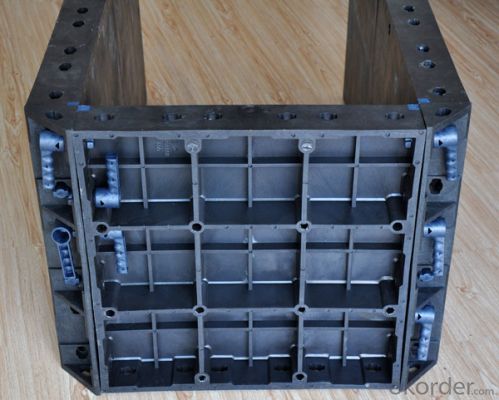
Screw Jack For Scaffolding Formwork Scaffolding Tubes and Fittings Low Price
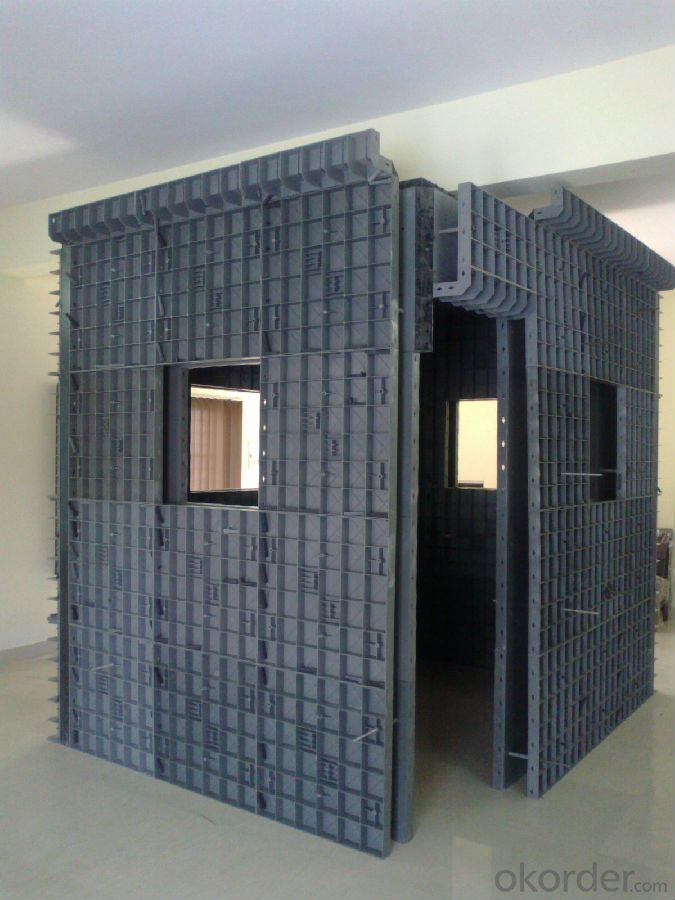
Screw Jack For Scaffolding Formwork Scaffolding Tubes and Fittings Low Price
Advantage
* Good loading capacity
* Easy to assemble and dismantle
* Stable and durable thanks to its structual design & automatic welding quality
* Customized solution helps you work safe, save cost and convenient
* Excellent quality for formwork & scaffolding with wide choices
Packing
in bulk or in bundle, or as requested
Shipping
15-20 Days.
Normally small orders, it needs just 15-20 business days to the port. For goods with stock, it would be even shoter.
Screw Jack For Scaffolding Formwork Scaffolding Tubes and Fittings Low Price
Other scaffolding & formwork products:
(1) Scaffolding System:
Including Ringlock Scaffolding System and accessories; Cuplock Scaffolding System and accessories; Kwikstage Scaffolding System and accessories; Haki Scaffolding System and accessories;
(2) Scaffolding Frame & Accessories:
Including Walk Through Frame Scaffolding; Ladder Frame Scaffolding; Accessories; we also can make scaffolding according to your samples or drawings.
(3) Scaffolding Couplers/Clamps:
We can produce all kinds of forged and pressed couplers, including British type couplers, American type couplers, German type couplers, Italian type couplers ,fence couplers, BRC coplers and so on. We also can produce according to your drawings or samples.
FAQ Screw Jack For Scaffolding Formwork Scaffolding Tubes and Fittings Low Price
Why Us?
We are one of the Top 500 in the world, largest construction materials supplier in China. Also we are a state-owned company and respond to every customer with large and also small orders.
We own professional manufacturers with powerful producing capacity.
Extensive and comprehensive quality control system
Excellent products with competitive prices.
Efficient services in pre and after sale.
Full energy with affluent experience team.
- Q: How does steel frame formwork accommodate for different concrete curing temperatures?
- Steel frame formwork is a versatile and adaptable construction technique that can effectively accommodate different concrete curing temperatures. The key lies in the inherent properties of steel, which allow it to withstand high temperatures without compromising its structural integrity. Firstly, steel has a high melting point, typically around 1370 degrees Celsius. This means that it can withstand the heat generated during the curing process, which typically involves temperatures between 10 and 30 degrees Celsius. The steel frame formwork acts as a strong and rigid structure that can support the weight of the wet concrete and resist any thermal expansion or contraction that may occur during curing. Secondly, steel has excellent thermal conductivity properties, which means that it can effectively dissipate heat and maintain a relatively stable temperature. This is particularly important in cases where the concrete curing temperature needs to be controlled or regulated, such as in cold weather conditions or when using special concrete mixtures. Furthermore, steel frame formwork can also accommodate for different concrete curing temperatures by incorporating insulation materials. Insulation can be added to the formwork to help regulate the temperature and prevent excessive heat loss or gain during the curing process. This is particularly beneficial when curing temperatures need to be maintained at a specific range for optimal strength development and durability of the concrete. In summary, steel frame formwork accommodates for different concrete curing temperatures by utilizing the inherent properties of steel, such as its high melting point and excellent thermal conductivity. It provides a strong and stable structure that can withstand the heat generated during curing, while also allowing for temperature regulation through the use of insulation materials.
- Q: Is steel frame formwork suitable for both residential and commercial projects?
- Steel frame formwork is appropriate for both residential and commercial projects. It is favored in construction projects of all kinds because it offers several advantages. Firstly, steel frame formwork is highly durable, capable of withstanding the heavy loads and pressures often associated with both residential and commercial projects. This ensures that the formwork remains stable and secure throughout the construction process, resulting in a high-quality finished product. Moreover, steel frame formwork is adaptable and can be easily customized to meet the specific requirements of different projects. Its modular design allows for simple assembly and disassembly, making it perfect for projects that need frequent formwork reconfiguration. Steel frame formwork is also highly versatile and can be utilized to create a wide range of structures, from simple residential buildings to complex commercial structures. Additionally, steel frame formwork offers an excellent strength-to-weight ratio, making it an efficient and cost-effective choice for both residential and commercial projects. Its lightweight nature allows for easy transportation and handling, reducing construction time and labor costs. Furthermore, steel frame formwork is reusable, reducing waste and promoting sustainability in construction practices. In conclusion, steel frame formwork is an appropriate choice for both residential and commercial projects due to its durability, adaptability, versatility, strength-to-weight ratio, and cost-effectiveness. Its numerous advantages make it the preferred formwork system for contractors and builders in various construction sectors.
- Q: How does steel frame formwork contribute to the overall sustainability of a construction project?
- There are several ways in which the use of steel frame formwork contributes to the overall sustainability of a construction project. To begin with, steel is an extremely durable material that can withstand the demands of construction. This durability ensures that the formwork system will last a long time, reducing the need for frequent replacements. As a result, there is a decrease in waste generation and resource consumption. Furthermore, unlike traditional timber formwork that is often discarded after one use, steel frame formwork can be dismantled and reused multiple times. This significantly reduces material waste and minimizes the environmental impact of the construction process. Moreover, steel is a recyclable material. Once it reaches the end of its useful life as formwork, steel frames can be recycled and used to create new steel products. This helps to reduce the demand for new materials and conserve natural resources. In addition, steel frame formwork offers flexibility in design and construction. Its modular nature allows for easy customization and adjustment, minimizing the need for excessive material cutting and reducing construction waste. This adaptability also ensures efficient resource use and decreases the overall environmental footprint of the project. Furthermore, steel frame formwork enables faster construction compared to traditional formwork systems. This results in reduced energy consumption, lower carbon emissions, and a smaller environmental impact. In conclusion, the use of steel frame formwork promotes sustainability in construction projects by promoting durability, reusability, recyclability, flexibility, and efficiency. By incorporating steel frame formwork, construction projects can minimize waste, conserve resources, reduce carbon emissions, and create more sustainable built environments.
- Q: Can steel frame formwork be used in high-rise construction?
- Yes, steel frame formwork can be used in high-rise construction. Steel frame formwork is a versatile and durable option for constructing high-rise buildings. It provides the necessary strength and stability required to support the weight and pressure exerted by the concrete during the construction process. Steel frame formwork can be easily assembled and disassembled, making it suitable for repetitive use in high-rise projects. Additionally, its adjustable features allow for flexibility in accommodating different shapes and sizes of concrete structures. The use of steel frame formwork in high-rise construction helps to ensure efficient and safe construction processes, leading to faster project completion and enhanced structural integrity.
- Q: The following is a two storey steel frame to be done above the door of the frame of 9 meters high, with the PKPM model is the use of door type rigid frame, with interlayer, or the lower frame, the upper
- The steel frame can be directly input into the portal frame
- Q: How does steel frame formwork compare to other types of formwork in terms of durability?
- Considered one of the most durable formwork options in the construction industry, steel frame formwork stands out from traditional wooden formwork and other temporary systems. Its ability to withstand the demanding pressures of concrete pouring ensures the longevity of the structure being built. The durability of steel frame formwork is a result of its strong construction and high-quality materials. Steel frames are typically made from corrosion-resistant materials like steel or aluminum alloys, known for their exceptional strength-to-weight ratios. This ensures that the formwork remains intact and unaffected by the weight and pressure of the concrete. Moreover, steel frame formwork is designed to be reusable, making it a cost-effective solution for multiple construction projects. The frames can be easily dismantled and reassembled, allowing for efficient use in different locations and reducing the need for constant replacement. This reusability factor significantly contributes to the durability of steel frame formwork, eliminating the wear and tear associated with single-use systems. When compared to other types of formwork, such as wooden or plastic-based systems, steel frame formwork outperforms in terms of durability. Wooden formwork is prone to deterioration from moisture, rot, and insects, requiring frequent repairs or replacements. On the other hand, plastic-based formwork may be vulnerable to thermal expansion and contraction, potentially compromising the integrity of the concrete structure. In conclusion, steel frame formwork is an exceptional choice for durability in comparison to other formwork options. Its strong construction, high-quality materials, and reusability make it a reliable and long-lasting solution for concrete construction projects.
- Q: Does steel frame formwork require any special equipment for installation and removal?
- Special equipment is needed for the installation and removal of steel frame formwork. Cranes or hoists are often necessary to lift and position the steel frames. In addition, specialized tools like wrenches and spanners may be necessary to tighten the bolts and ensure a secure connection between the frames. To remove the steel frame formwork, cranes or hoists are also necessary to safely lift and remove the frames from the structure. In conclusion, proper equipment is essential to ensure the efficient and safe installation and removal of steel frame formwork.
- Q: How does steel frame formwork contribute to the speed of construction?
- Steel frame formwork contributes to the speed of construction by providing a durable and reusable structure for pouring concrete, which reduces the time and effort required for formwork assembly and disassembly. The steel frame's strength and stability allow for faster and more efficient pouring and curing of concrete, resulting in accelerated construction timelines.
- Q: Can steel frame formwork be used for both straight and curved beams?
- Steel frame formwork is suitable for both straight and curved beams. This versatile system can be adjusted and tailored to fit various shapes and sizes of beams. It ensures a stable and rigid structure, guaranteeing proper pouring and support of the concrete. The steel frames can be effortlessly assembled and dismantled, providing flexibility for creating both straight and curved beams. Moreover, steel frame formwork boasts exceptional strength and durability, making it ideal for construction projects that demand both types of beams.
- Q: What are the different types of coatings or surface treatments applied to steel frame formwork?
- There are several types of coatings or surface treatments that can be applied to steel frame formwork. Some common options include galvanization, epoxy coatings, powder coatings, and paint. Galvanization involves applying a layer of zinc to the steel surface, which provides corrosion resistance. Epoxy coatings create a protective barrier against chemicals and moisture. Powder coatings offer durability and resistance to chipping, scratching, and fading. Paint can be used for aesthetic purposes or to provide a basic level of protection. The choice of coating or surface treatment depends on the specific requirements of the project, including the desired level of corrosion resistance, durability, and appearance.
Send your message to us
Screw Jack For Scaffolding Formwork Scaffolding Tubes and Fittings Low Price
- Loading Port:
- Tianjin
- Payment Terms:
- TT OR LC
- Min Order Qty:
- 6000 set
- Supply Capability:
- 50000 set/month
OKorder Service Pledge
OKorder Financial Service
Similar products
Hot products
Hot Searches
